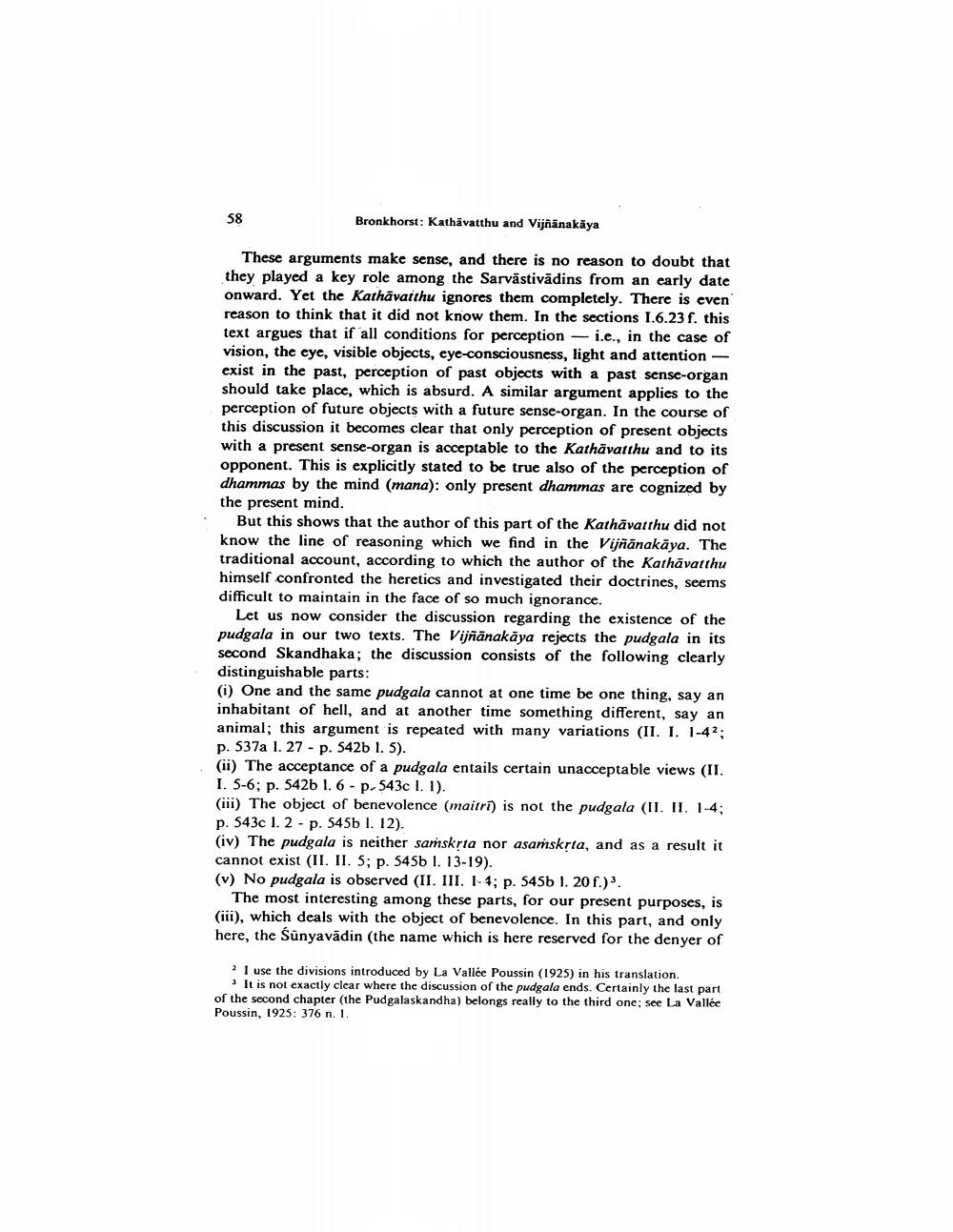Book Title: Kathavatthu And Vijnanakaya Author(s): Johannes Bronkhorst Publisher: Johannes Bronkhorst View full book textPage 2
________________ 58 Bronkhorst: Kathāvatthu and Vijñānakāya - These arguments make sense, and there is no reason to doubt that they played a key role among the Sarvästivädins from an early date onward. Yet the Kathavaithu ignores them completely. There is even reason to think that it did not know them. In the sections 1.6.23 f. this text argues that if all conditions for perception - i.e., in the case of vision, the eye, visible objects, eye-consciousness, light and attention - exist in the past, perception of past objects with a past sense-organ should take place, which is absurd. A similar argument applies to the perception of future objects with a future sense-organ. In the course of this discussion it becomes clear that only perception of present objects with a present sense-organ is acceptable to the Kathavatthu and to its opponent. This is explicitly stated to be true also of the perception of dhammas by the mind (mana): only present dhammas are cognized by the present mind. But this shows that the author of this part of the Kathavatthu did not know the line of reasoning which we find in the Vijñānakaya. The traditional account, according to which the author of the Kathāvatthu himself confronted the heretics and investigated their doctrines, seems difficult to maintain in the face of so much ignorance. Let us now consider the discussion regarding the existence of the pudgala in our two texts. The Vijñänakaya rejects the pudgala in its second Skandhaka; the discussion consists of the following clearly distinguishable parts: (i) One and the same pudgala cannot at one time be one thing, say an inhabitant of hell, and at another time something different, say an animal; this argument is repeated with many variations (II. I. 1-42; p. 537a 1. 27 p. 542b 1. 5). (ii) The acceptance of a pudgala entails certain unacceptable views (II. I. 5-6; p. 542b 1. 6 p. 543c 1. 1). (iii) The object of benevolence (maitri) is not the pudgala (II. II. 1-4; p. 543c 1. 2 p. 545b l. 12). (iv) The pudgala is neither samskṛta nor asamskṛta, and as a result it cannot exist (II. II. 5; p. 545b l. 13-19). (v) No pudgala is observed (II. III. 1-4; p. 545b 1. 20 f.) 3. The most interesting among these parts, for our present purposes, is (iii), which deals with the object of benevolence. In this part, and only here, the Sunyavādin (the name which is here reserved for the denyer of 2 I use the divisions introduced by La Vallée Poussin (1925) in his translation. 3 It is not exactly clear where the discussion of the pudgala ends. Certainly the last part of the second chapter (the Pudgalaskandha) belongs really to the third one; see La Vallée Poussin, 1925: 376 n. 1.Page Navigation
1 2 3 4 5
